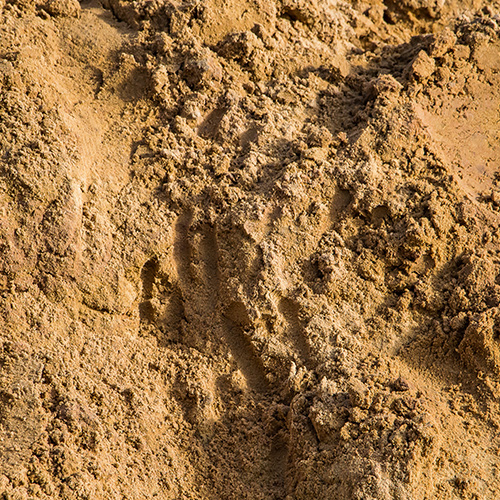WORKING IN SANDY SOIL
Whether you’re excavating, transporting materials, or simply navigating through a worksite, sandy soil can present unique challenges for traction, excavation safety, and various aspects of construction and earthmoving operations. To help you overcome these challenges and minimize costly delays, we’ve put together some important tips for effectively digging in sand and maneuvering on sandy soil.
SELECT THE RIGHT CTL OR EXCAVATOR TRACKS
When digging in sand or traversing sandy soil, maintaining adequate traction can be difficult, particularly on slopes. We recommend opting for wide, high flotation CTL or excavator tracks. These distribute weight more evenly, reducing the risk of sinking into soft, sandy terrain.
PICK SUITABLE SKID STEER TIRE
For non-tracked equipment like skid steers, both solid and pneumatic tires can provide sufficient traction in sandy environments. Look for skid steer tires with deep tread patterns, as these offer the necessary grip for effective maneuverability on loose surfaces such as sand and gravel.
EXERCISE CAUTION WHILE EXCAVATING
When digging in sand, it’s crucial for operators to prioritize precision and gentleness. Sandy soils are easily disturbed, increasing the risk of cave ins compared to denser soil types. By excavating slowly and removing material in smaller increments, you can enhance stability, reduce the likelihood of dangerous collapses, and improve overall project efficiency.
USE THE RIGHT EXCAVATOR BUCKET OR SKID STEER BUCKET
Selecting the appropriate bucket for your machine is key for successful digging or loading operations. In loose, sandy soils, a general purpose excavator bucket or skid steer bucket with wide teeth and curved edges is often the best choice. This design minimizes soil disturbance while still allowing for efficient material movement.
MAINTAIN CLEAN TRACK
Sandy soil can cause abrasion between components, leading to increased wear on excavator tracks. Throughout the workday, use a shovel to clear the undercarriage and a pressure washer to remove sand and dirt from hard to reach areas.
APPLY AMPLE LUBRICATION
Due to its abrasive nature, sand can be harsh on your undercarriage, bucket, and other moving parts. Ensure all these components are well greased, and reapply lubricant multiple times throughout the day or approximately every five hours. This practice helps keep sand away from sensitive parts and pushes out any accumulated sand when fresh grease is applied.
IMPLEMENT PROPER TRENCH PROTECTION
Installing trench protection is critical when working in sandy soil. Traditional sloping and benching methods are often less effective in sand due to its loose nature. Instead, consider using shoring and trench shields, which utilize metal supports to reinforce trench walls and prevent cave ins during excavation.
CONDUCT THOROUGH SOIL TESTING
Soil tests are crucial for jobsite and structural safety, especially when working with sandy soil. These assessments help on-site experts determine the appropriate benching, shoring, and sloping techniques to prevent cave ins during excavation. Understanding the soil’s physical and chemical properties allows you to calculate its weight bearing capacity and determine the necessary compaction levels.
For any questions about operating on sandy soil, selecting the right excavator bucket or skid steer bucket, or digging in sand, contact our team today!
